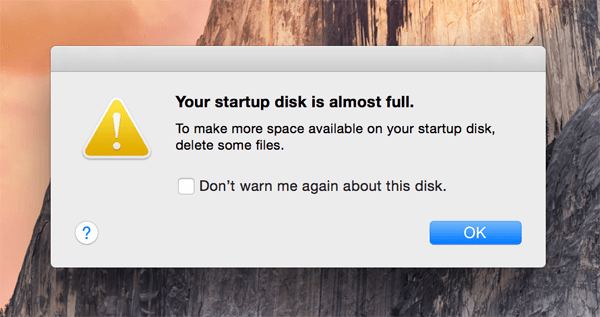- How To Free Storage On Mac
- How To Free Mac Space
- How To Free Storage On Mac Os X El Capitan
- How Do I Free Storage On My Mac
System cleanup in one click
Storage space on your Mac is important, and can be an issue when you run out. Modern Macs come with Solid State Drives (SSD) that are really fast and durable, but with increased cost. That means many more users have Macs with lower onboard storage these days since the added cost of a MacBook is not affordable to some.
You can view a summary of your storage pattern on your Mac by clicking on About This Mac from the Apple menu. An overview of your used and free space will be displayed in the storage section. Click on the Manage button in the top right corner to view options to free up storage. When you purchase your Mac, the storage that you choose at the time of purchase is what you will have for the entire time that you own the computer as it can’t be upgraded. Knowing how to free up space on your Mac allows you to make sure that your Mac will keep running fast and that you will always be able to save new files to it when you. Way 2: Quickly Clean System Files and Logs from Other Storage Space. Step 1: Open Mac Cleaner. Choose “System Junk” in the “Cleaner” section. Step 2: Click “Scan” to scan for all system junk files in a short time. Step 3: Click “View” to access system cache, application cache, system logs, user logs and localization. How to Manage Storage on Mac. By following the above-listed techniques, you would be able to clear disk space on Mac. Apart from that, you can also manage storage on Mac more efficiently by following these suggestions:. Manage iCloud Sync. By default, every Apple ID gets access to 5 GB of free storage on iCloud. You can view a summary of your storage pattern on your Mac by clicking on About This Mac from the Apple menu. An overview of your used and free space will be displayed in the storage section. Click on the Manage button in the top right corner to view options to free up storage space with macOS Sierra.
Managing your Mac storage is typically pretty simple – until you encounter system storage. We’ll show you what Mac system storage is, how to manage it, answer that burning question “how do i clear my system storage,” and why it’s a good idea to keep a close tab on your mac’s setting and storage space.
3 apps to to deal with system storage
Clean and manage system files on Mac with CleanMyMac X, iStat Menus, and Get Backup Pro. Try all three for free.
What is “System” Storage
Let’s first examine your Mac’s overall storage. Your Mac or MacBook system storage can be found here, too:
- On your Mac, click the Apple logo on the top left corner of the menu bar
- Select “About This Mac” from the drop down menu
- Select “Storage” in the popup window
- Select “Manage”
At the bottom of the window you’ll see two storage options you can’t touch: Other, and System. The “system” listed is system storage – but what is it?
In system storage Mac saves a lot of seemingly random things. There are drivers for apps and services, fonts, desktop pictures – all kinds of things. Mac system taking up space, when put into context, is totally understandable. These files are often necessary, and deleting them can wreak havoc elsewhere in your system if you don’t know what you’re doing.
Why does this storage take up huge disk space on a Mac?

Simply put, these are files your Mac deems necessary, and wants to keep you from accessing and deleting. Let’s be honest: if you took a look at these files, you likely wouldn’t know what many of them were, and would be compelled to delete them.
So, Apple tucks them in a partition named ‘system’ that prevents you from directly accessing system storage on your Mac so you don’t mistakenly delete important files. The english riviera zip.
How to clear system storage on Mac
Now that you know what system storage is, you’re likely still asking yourself “how do I clear my system storage?” We’ve got you covered.
Remove Time Machine Backups
We know, you think Time MAchine backups are stored on an external drive – and you’re right! Yor Mac also keeps a copy of some backups on your machine in case your external drive isn’t available, or is corrupted. This is a safety feature meant to enable backups in almost any circumstance.
While Time Machine backups are meant to be deleted automatically, your Mac doesn’t always do a great job of this. If you really want to delete them yourself, you’ll have to dig into Terminal. Here’s how you can delete Time Machine backups yourself on the Mac:
- Launch the Terminal app on your MacWhen Terminal appears, type this command: tmutil listlocalsnapshotdates
- Press ‘return’ on your Mac’s keyboard (Note: You’ll see a list of Time Machine backups by date populate in Terminal after step three.)
- Type this command into Terminal: tmutil deletelocalsnapshots [DATE] (Note: Instead of typing [DATE] use the date of the Time Machine backup you want to delete as it’s shown in Terminal.)
- Press ‘return’ on your Mac’s keyboard
You can repeat these steps for as many backups as you like.
Get Backup Pro may be better suited for your backup needs. It allows you to automate backups, just like Time Machine, but gives you more control over what’s backed up, how often, and to where. It also doesn’t keep a backup stored locally on your Mac, giving you more storage space for things that matter more.
Creating a backup with Get Backup Pro is also really simple. Here’s how to create a full backup of your Mac using the app:
- Open Get Backup Pro on your Mac
- Select the ‘plus’ icon on the bottom left corner of the window
- Name your ‘project’ (Note: A ‘project’ in Get Backup Pro is a backup. You can choose to have multiple types of backups. As an example, you may want to backup your photos library daily, but your entire Mac weekly.)
- Under “Backup destination” select “Disk Image” from the first menu
- Select the location you want to save your backup in the second menu
- Select “OK”
With system taking up disk Mac computers don’t do a great job of managing the space when your storage runs low, but having your own backup system is how to reduce system storage on Mac.

Optimize your storage
Okay, let’s get back into our storage section. Follow these instructions again:
- On your Mac, click the Apple logo on the top left corner of the menu bar
- Select “About This Mac” from the drop down menu
- Select “Storage” in the popup window
- Select “Manage”
At the top of the window you’ll see a section named “Recommendations.” These are Apple’s preferred methods for earning you more onboard storage space – but what does it all mean?
The first suggestion is for you to move your files and folders to iCloud, which places your stuff in the cloud rather than hosting it on your Mac. Other options have an “Optimize” button, which is a means to keep only the most current and relevant pieces of data on your machine.

As an example, we ‘optimized’ Apple TV, and it offered to remove any shows that have been watched from the Mac. A great way to tidy up lingering files you no longer need, certainly.
How to clean system storage on Mac with ease?
Remember that system storage holds important files, so don’t delete something just because you don’t understand what it is or why it’s on your Mac.
When you’re ready to start clearing your system storage, CleanMyMac X is the absolute best app you can have on your Mac. This ultra powerful app has a ton of features, and can clean your Mac up on a scheduled basis, fleeting unnecessary files and emptying the trash – it even monitors your Mac for malware, and makes critical speed improvements via its Smart Scan feature.
System storage can be managed with CleanMyMac X, too. In the Space Lens module, you’ll see your system storage represented as a folder. Here’s how to access it:
- Open CleanMyMac X on your Mac
- Select “Space Lens” from the left side of the window
- Select “Run” at the bottom of the window
When the app is done running, you’ll see a folder named “System.” This is your system storage, and you can look through it to see what’s in there. Most of it will likely be unavailable for deletion, but it’s a way to view files in system storage, too.
The best way to monitor your system
Monitoring your Mac is key to success, too, and there’s no better app for this than iStat Menus. The app lives in your menu bar, and provides quick-look access to your Mac’s performance, including CPU usage and memory availability. If you think your Mac may be filling up, iStat Menus can show you exactly how much storage space you have, including how it’s being occupied by folders of system settings. It has additional menus that display details about your memory in pie charts or graphs, including a real time view of how your memory is being used by your Mac.
Conclusion
System storage is largely inaccessible, but you can manage your memory in other ways. Deleting backups is the clearest path toward reducing your system storage capacity, and a massive help when you need to free up space. It’s also a great idea to monitor and manage your Mac memory routinely.
Happily, the three best apps for backing up, managing, and monitoring your Mac – Get Backup Pro, CleanMyMac X, and iStat Menus – are all available for free during a seven day trial of Setapp, an incredible suite of nearly 200 productivity apps for your Mac. After your trial ends, access to the full Setapp suite of apps is only $9.99 per month.
It’s an incredible deal, so why wait? Give Setapp a try today!
How to Clean Your Mac's Hard Disk Drive?
SSD (Solid State Drives) is fast, stable, and offers great performance. Unfortunately, compared to HDDs (Hard Disk Drives), the capacity-to-cost ratio is not good. There are, however, methods to free up hard drives to obtain additional capacity for computer systems, including the macOS.
Certain data and files are important, and you will not want to delete or move them. However, some files are redundant and can be removed without consequences. If you know which files you can safely delete, you can free up this space. Although the Windows operating system is known for inefficient clutter, the macOS also produces unnecessary files that take valuable disk space. In this article, we describe some methods on how to clean macOS disk space.
Video showing How to Obtain Free Space on Your Mac's Drive
Table of Contents:
It is recommended to run a free scan with Combo Cleaner - a tool to detect malware and fix computer errors. You will need to purchase the full version to remove infections and eliminate computer errors. Free trial available. Combo Cleaner is owned and operated by Rcs Lt, the parent company of PCRisk.com read more.
Inspect the drive to ensure that the system is running out of free space
Some issues relating to lack of storage might be difficult to determine and can even be a result of fake error logs. So, first, ensure that the system is, in fact, running out of free space. There are two methods to check available space on a hard drive:
1. Access the Apple menu and select About this Mac. Choose the Storage tab.
2. More detailed information can be found within the Disk Utility feature, which is located in the Applications folder under Utilities. Once Disk Utility is launched, select the drive connected to the Mac.
Begin by cleaning Trash
Once you are sure that the drive is actually full, the next step is to simply clean the computer (as if you were cleaning your home: you empty the trash). Open the Finder menu and choose Empty Trash. Bear in mind that some applications, such as Mail, iMovie, iPhoto, and others, have their own Trash. To clean those apps, follow the steps below:
1. Click Mailbox and choose Erase Deleted Items.
2. Select In All Account and Mailbox.
3. Finally click Erase Junk.
Alternatively, to avoid permanently losing your files, choose to archive your emails by following the steps below.
iPhoto
1. Click on iPhoto from the menu at the top of the screen.
2. Choose Empty iPhoto Trash.
iMovie
1. Click on File from the menu on top of your screen.
2. Select Move to Trash or File.
3. Then choose Move Rejected Clipsto Trash.
Clear unnecessary Downloads
How To Free Storage On Mac
The Downloads folder stores all files downloaded from the Internet. Often, these are forgotten after use and continue to use storage space. This is an excellent area to address when looking to free up space on your drive. Delete all redundant Download files.
1. Open Finder.
2. In the sidebar, choose the Downloads folder. Disk image (.dmg) files commonly occupy the most unused storage space.
Remove unused applications

Unused apps in isolation might not take up a great deal of space, but the amount of hard drive storage used by them collectively can be significant. Furthermore, removing apps on Macs is simple, especially those installed through App Store.
1. To delete them, open Launchpad.
2. Click and hold the program's icon you wish to remove.
3. When the icon starts to animate, click the Delete (x) button.
4. To delete any other app, drag the icon to Trash and then empty Trash.
Make space without losing any data
The best way to gain extra space on the Mac is to move non-executable files such as photos, movies, documents, and any large files, to add external storage, for example, an external drive, USB drive, DVD/CD drive, or cloud storage.
Compress large items
Another method to obtain some free space is to compress files. Compressed files remain on the computer but occupy less space. On the other hand, this can be less efficient than deleting or moving files to external storage. To find the largest files on the drive, follow the steps below:
1. Open Finder from the sidebar.
2. Select the Device (the label you provided) and type criteria into the search field.
3. When your search location appears (for example, This Mac), click the Add (+) button.
4. Click the first drop-down menu, and choose Other.
5. Find the logical size option, enable it, and then click OK.
6. Choose the 'is greater than' condition and type the amount (i.e., 50 Mb).
7. To compress items, right-click or hold Control and left-click it, and then select the Compress 'name' option.
If you are using an earlier version of macOS:
How To Free Mac Space
1. Click Go from the Finder menu and select Home.
2. Choose File, click Find and open the Find menu.
3. Find the File size option.
4. Choose the 'is greater than' condition and type the amount (i.e., 50 Mb).
5. To compress items, right-click or hold Control and left-click it, and then select the Compress 'name' option.
6. To archive, your emails, open the Mail application and select a folder you wish to archive (e.g., Inbox).
7. Drag it to the desktop. The mbox folder will appear on your desktop.
8. Right-click it or use the Control and left-click combination, and select Compress 'Inbox.mbox'.
9. Now you can delete your messages from Mail.
Delete unnecessary temporary files, system caches, and logs
How To Free Storage On Mac Os X El Capitan
System stores several System logs and temporary files - deleting them will increase the available space on your drive. To clean the system from this type of file, we recommendCombo Cleaneror other third-party applications.
Clear the browser cache storage
How Do I Free Storage On My Mac
Browsers store website data such as cookies and cache information. Cleaning these hidden files might free up storage space. To clean up Safari, simply click Safari on the menu at the top of the screen and select Clear History. Browsers such as Google Chrome and Mozilla Firefox can be cleaned similarly.